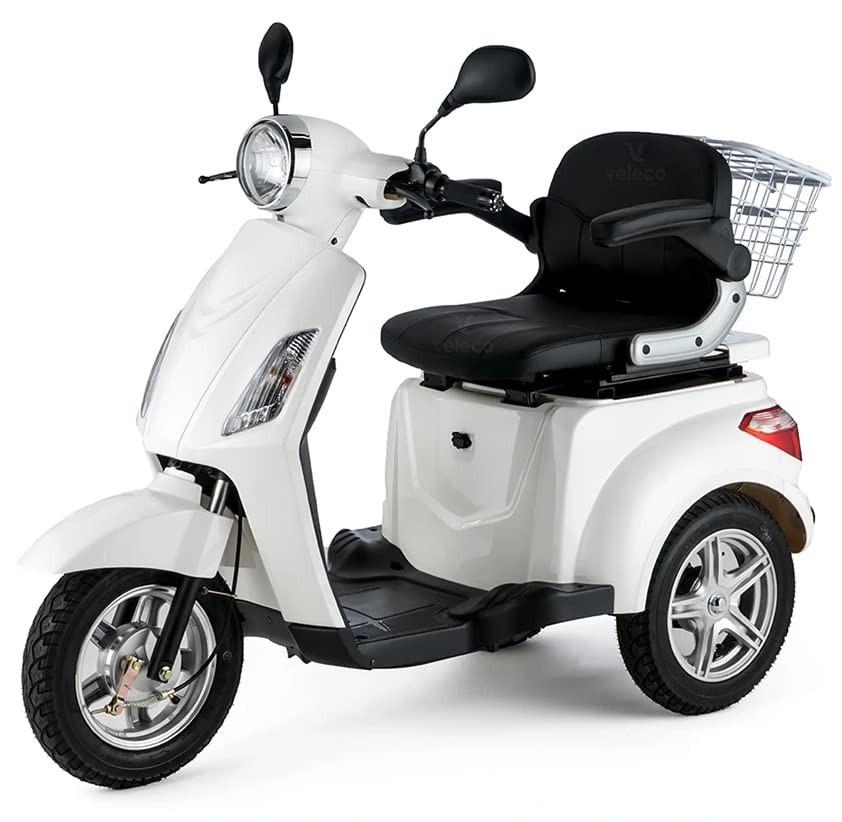What's The Job Market For Mobility Scooters Road Legal Professionals L…
Dewitt Hazel
2024.08.05 03:17
66
0
본문
 Are Mobility Scooters Road Legal?
Are Mobility Scooters Road Legal?Mobility scooters are utilized by a few older people to move around on a regular basis. They help them remain independent and delay the transition to an assisted living facility. However, there are some who are confused about the legal requirements for the use of these scooters on roads.
Clarification The mobility scooters are pedestrian vehicles. They are therefore required to follow the same rules that pedestrians would, such as obeying traffic signs and stop signs. They cannot be driven on routes that are only for cyclists.
Class 1
Class 1 mobility scooters are able to travel up 8 speed and are road legal. They must have a system for reducing their maximum speed on roads. They should also have a horn, a brake system that is efficient, and lighting. They are also required to have a rearview mirror which helps avoid accidents and keep other road users secure. Class 2 scooters are able to be used on roads, but they must be operated at a lower speed limit of 4 miles per hour. They can be fitted with headlights and indicators that signal other road users. They are not allowed in motorways or cycle lanes.
It is crucial that users of mobility scooters are aware of the laws in their state. For instance, in Arkansas mopeds and scooters have to be registered with the Department of Motor Vehicles (DMV). To ensure visibility they must wear a helmet or wear reflective clothing or other items. Furthermore, they should obey traffic laws and give priority to pedestrians who are walking along sidewalks.
Mobility scooters must be parked so that they don't interfere with pedestrian traffic or cause other road users or pedestrians inconvenience. The scooter should not be placed in a spot that could pose a threat to pedestrians or users of wheelchairs. Avoid parking your scooter near busy areas. You could end in the path of other vehicles or even damage your scooter.
You must also yield to pedestrians when using the scooter class 2 or 3. You must also give an audible signal when passing an individual. You are not able to travel on dual carriageways unless are equipped with an amber flashing lamp.
There aren't any specific guidelines for where to park your scooter. However, it is best to avoid areas which are likely to be crowded. It's not a good option to park a scooter in front a café or shop because it can create traffic issues and inconvenience.
Class 2
If you plan on using mobility scooters in public, you need to be aware of the rules and regulations that govern the use of these devices. You'll need to register your scooter, and you'll also need to get insurance. You will also need to become familiar with the highway code in order to drive safely and stay aware any road dangers. You should take a scooter safety course to learn the proper way to maintain and operate your scooter.
Class 2 mobility scooters have a speed limit of 4mph, and are made for use in the indoor or on the pavement. They are smaller and more maneuverable in comparison to their four-wheeled counterparts. They can also be disassembled to make them easier for transport in the car. These scooters are equipped with basic controls, lights, indicators and a horn, along with a low-speed limit.
The DVLA (Driver and Vehicle Licensing Agency) does not require a driver's licence for these scooters. Complete the form V55/4 for new models or the form V55/5 for older vehicles to register your scooter. They're not allowed on roads, however they can be driven on sidewalks and pedestrian walkways, provided you don't obstruct other traffic.
Choosing the best scooter for your needs starts with evaluating your lifestyle and timetable. Consider your daily routine and whether you prefer short excursions within a large space, or longer trips outdoors. Also, consider your medical history and the kinds of outdoor surfaces you'll encounter. Once you've determined your requirements, test-drive different models to see what suits you.
If you want to purchase a class 3 scooter you must be at least 14 years old and possess a valid UK driver's license. You must also carry an insurance card that is valid and register your scooter with the DVLA. These models aren't exempt from road tax like class 3 road 2 scooters. You must also obtain a certificate of fitness from your physician to prove you're capable of the task. In addition to registration of your scooter you'll also need to wear a helmet and adhere to all traffic laws. You can learn more about registration for mobility scooters and safety regulations by visiting the DVLA website.
Class 3
Despite the common misconceptions, you don't actually need a licence to drive on a scooter, but there are certain conditions you must meet. If you plan to ride your scooter on a road or sidewalk where pedestrians could cross, it's best to wear a safety helmet to ensure the safety of you and other riders. Also, make sure that your scooter has been registered with the DVLA and is insured. It is also important to follow the essential road rules, and always wear an appropriate seatbelt.
Class 2 scooters have the maximum speed of 4mph, and are designed for indoor or outdoor use. They are smaller and less maneuverable, and can easily be disassembled for transport in a vehicle. Mobility scooters in class 3 however are designed to operate on roads as well as pavements. They also have additional safety features, like reflectors and lights.
While you don't require license to operate a class 3 scooter, you do need to register it with the DVLA and also have it insured. You are also required to obey the Highway Code, so it is important to be familiar with the Highway Code before you start using your scooter on roads and pavements. It is also recommended to take a driving course prior to attempting to use a mobility scooter on the road. This will help you become familiar with the controls and driving conditions.
A class 3 scooter can be used on the roads, but not on bus lanes, motorways or cycle-only' lanes. It is not allowed to travel on dual-carriageways with speeds that exceed 50mph.
At Aspire2 We can assist you in choosing which type of mobility scooter is best suited for your needs, and we provide a variety of accessories and services to help you navigate your way. We are happy to answer your questions and will arrange a test drive in our Lewes showroom.
Licensing
Mobility scooters can be a useful tool for people who have lost some or all their ability to walk due to a medical condition, or age. These battery-operated devices can allow people to regain some autonomy and enhance their lives, especially when traveling long distances. There are a number of aspects to be considered when using a scooter in order to ensure safety and conformity with the local laws and regulations. This could include wearing helmets, using lights and reflectors at night and maintaining the device in proper operating condition.
In terms of traffic laws and regulations, most states categorize mobility scooters as pedestrian devices, and not vehicles. Therefore, they are not required to be registered or licensed with the Department of Motor Vehicles (DMV). Many municipalities have rules and guidelines for operating a mobility scoot. Some of these rules may include wearing an appropriate safety helmet, observing traffic signals, or adhering speed limits. It is also not permitted to use a scooter on the highways or on roads as they are not designed for use in such conditions. This can pose an injury to the rider as well as other road users.
On pedestrian walkways and sidewalks the speed limit is usually 4-8mph. However, this can differ based on where you are. Riders must also be aware of their surroundings and yield to pedestrians while operating the device. This is particularly important in areas that are crowded.
New Hampshire law also requires that all scooters come with functional signaling device, like horns and turn signals to increase visibility and ensure safer road traffic interactions. This is a crucial safety feature that should not be neglected. It is also recommended that you wear a helmet and carry insurance to protect yourself from injury and damage.
 In the end, the decision to get a mobility scooter will depend on each person's individual needs and limitations. For instance, some people may think that the class 3 mobility scooter for sale second hand 2 PMD is adequate for their lifestyle and budget while others might prefer an even more powerful and bigger model with a wider range of features. When purchasing a mobility scooter it is always recommended to speak with a medical professional to make sure that the mobility scooter purchased is appropriate for the user's lifestyle and medical requirements.
In the end, the decision to get a mobility scooter will depend on each person's individual needs and limitations. For instance, some people may think that the class 3 mobility scooter for sale second hand 2 PMD is adequate for their lifestyle and budget while others might prefer an even more powerful and bigger model with a wider range of features. When purchasing a mobility scooter it is always recommended to speak with a medical professional to make sure that the mobility scooter purchased is appropriate for the user's lifestyle and medical requirements.


댓글목록 0
댓글 포인트 안내